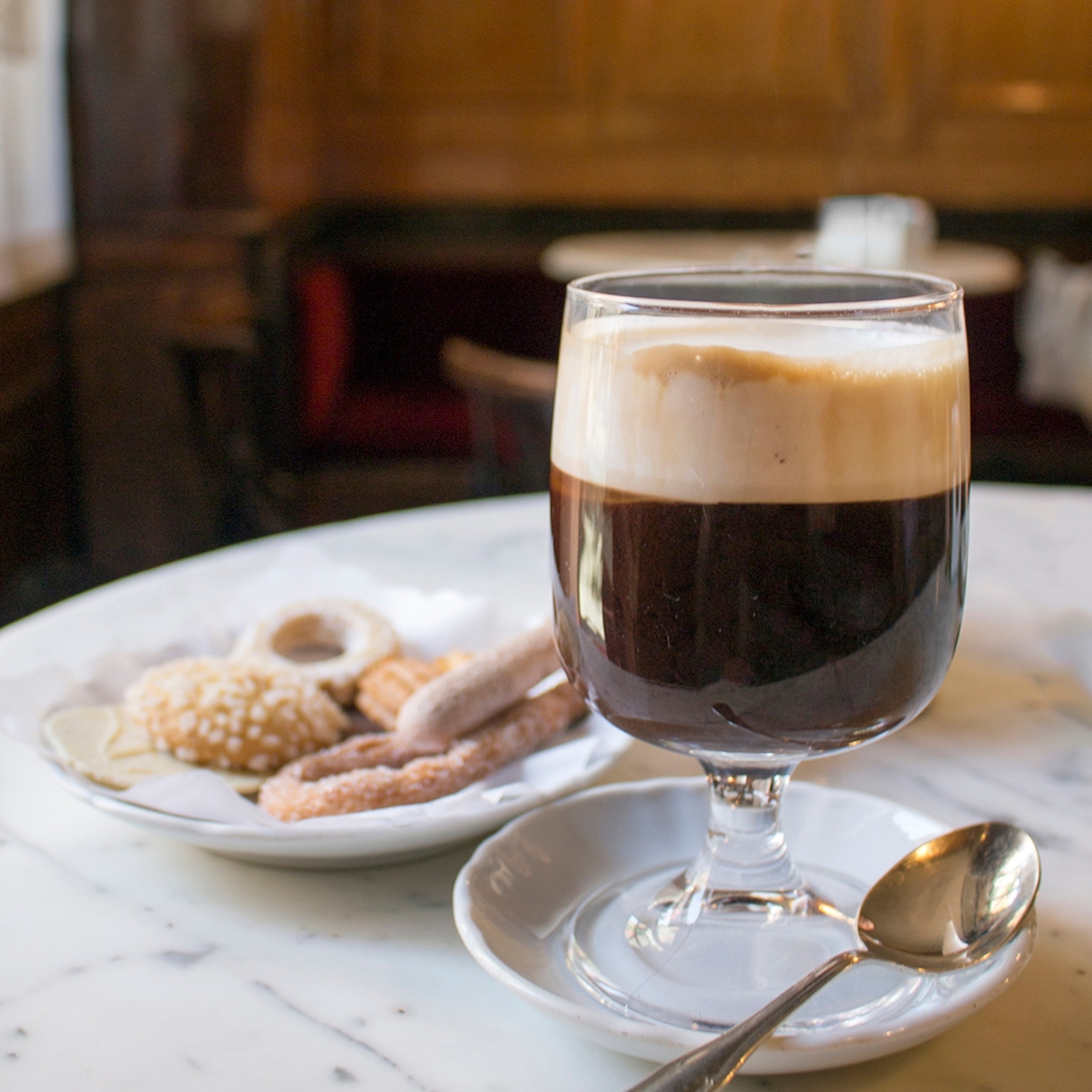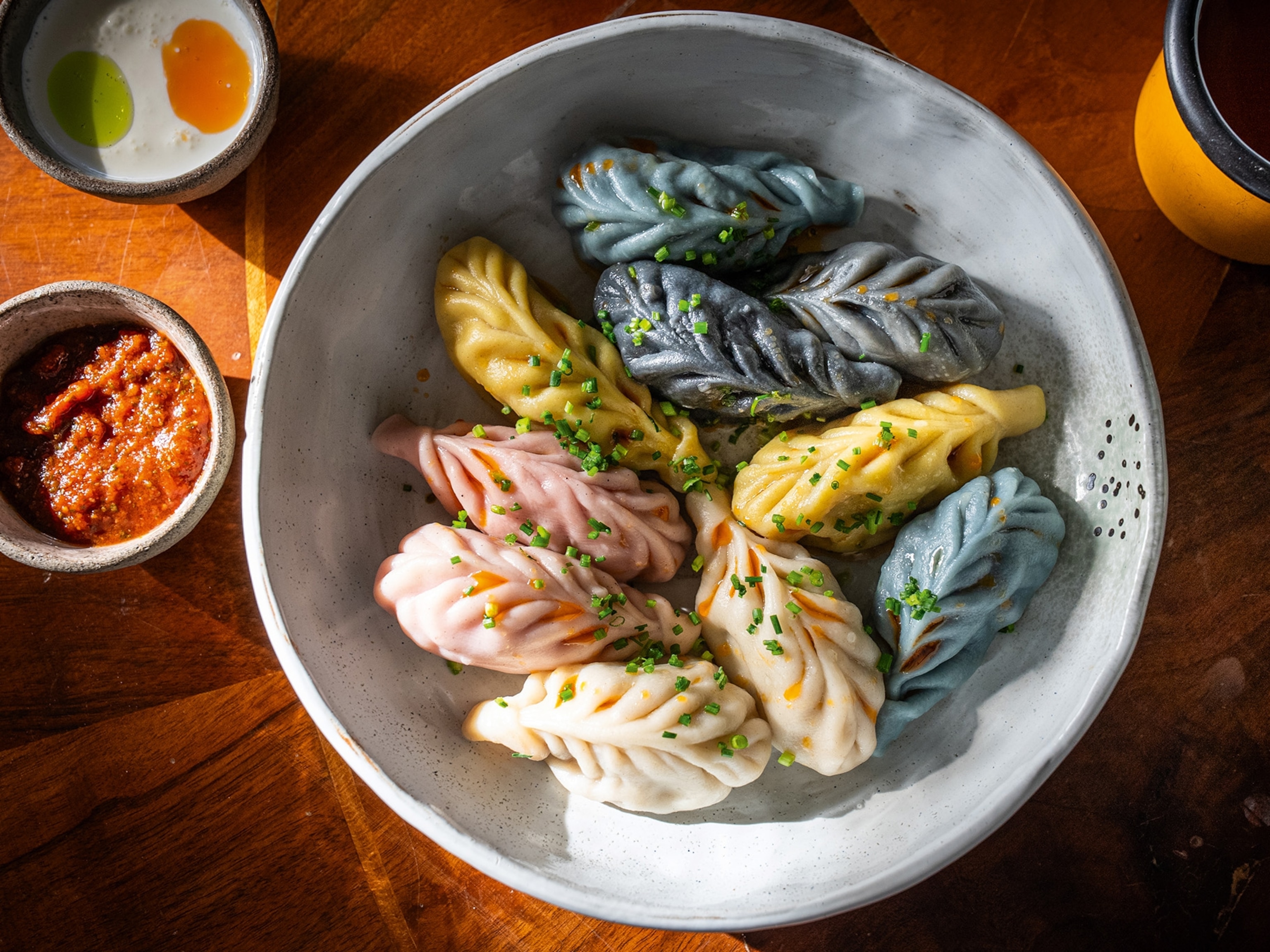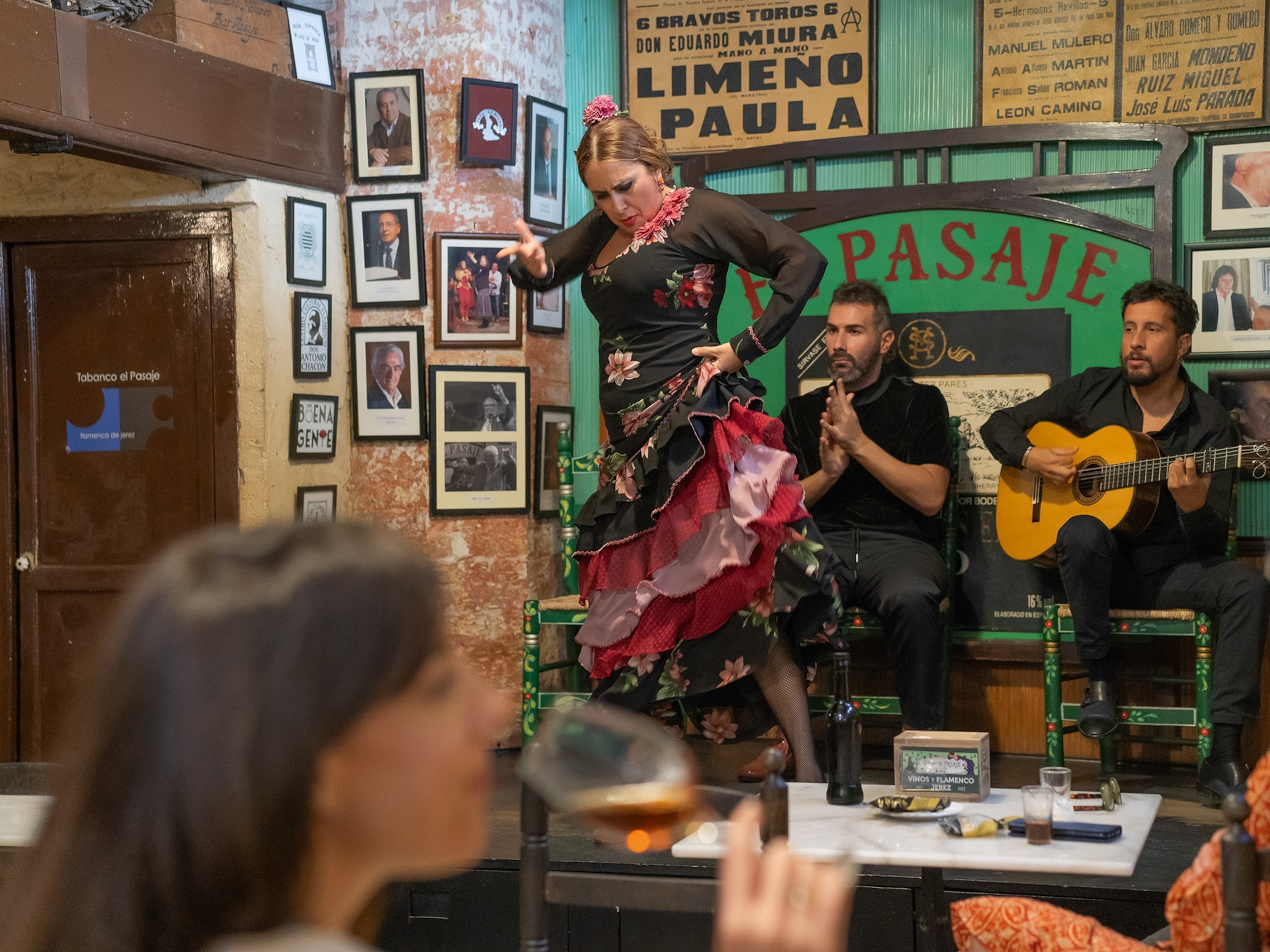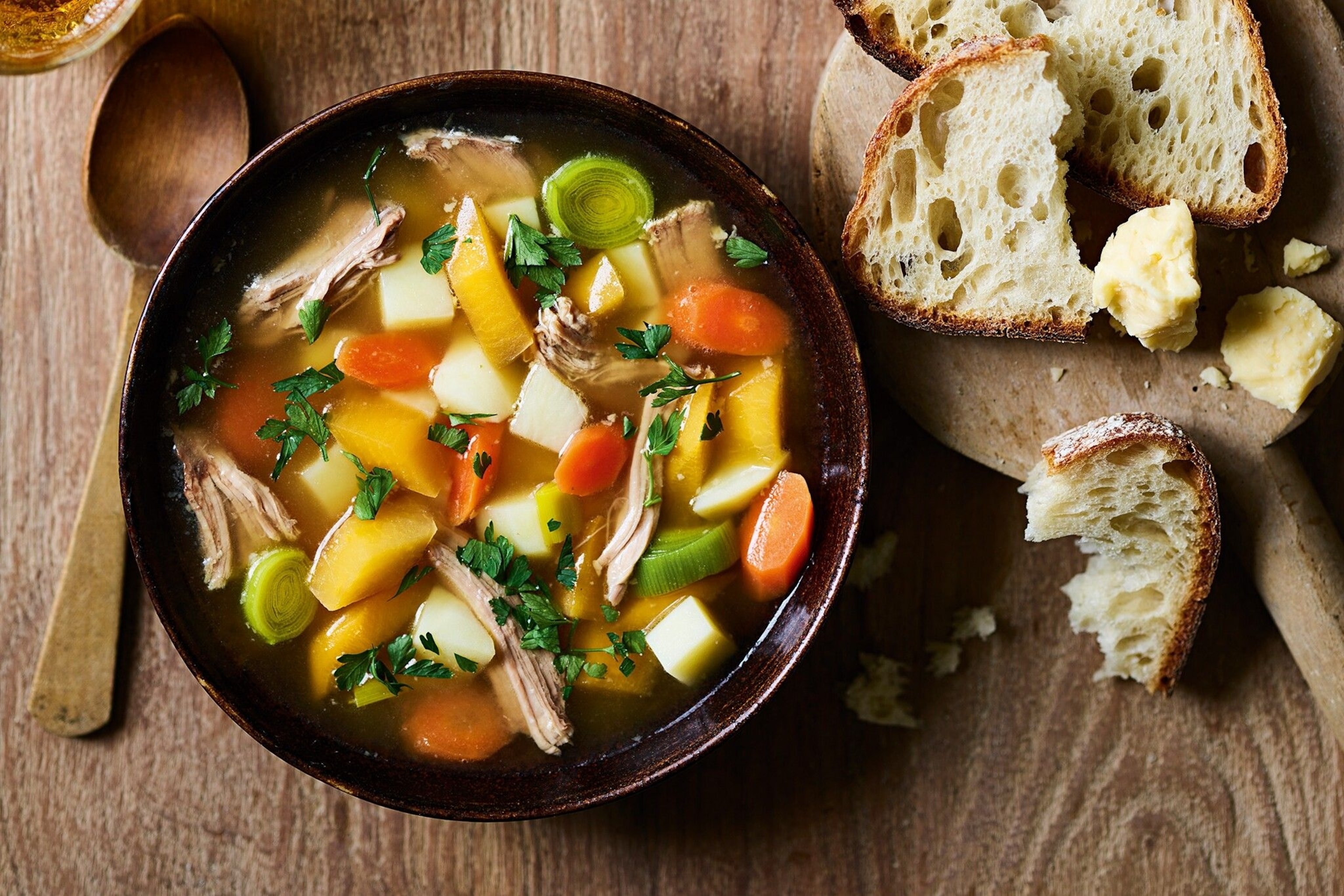
Deconstructing cawl, the hearty Welsh stew
Discover the heart of Welsh cooking through cawl, the country’s signature stew, rich with tradition and local flavor.
Cawl is a Welsh classic. If you grew up here, chances are it was a staple school dinner, Friday supper or weekend lunch. Outside of Wales, however, it’s less well known.
This is a dish that’s at once highly specific and quite hard to define. At its simplest, it’s a slow-cooked meat-and-vegetable soup, usually served during winter or early spring and often made with potatoes, onions, root vegetables and leeks, but it’s also closely related to stew. “It’s a peasant dish — plain but wholesome — that wouldn’t have been written down, but would have been handed down from family to family,” says food writer Nerys Howell, author of Welsh Food by Season.
On one hand, the word ‘cawl’ can be taken to mean ‘soup’ or ‘broth’ (as in, for example, cawl ffa: broad bean soup), but ‘cawl’ also has a more particular meaning, with a cultural significance much like that of Irish stew or Russian borscht. It may have come from the Latin ‘caulis’, meaning ‘stalk’ or sometimes cabbage, or it could be related to another Latin word, ‘calidus’, which is the root of ‘caldo’ — a cawl-like soup made in Galicia, northwest Spain, and in neighbouring Portugal.
In the past — as was the case in Howell’s family — the meat and vegetables would sometimes be removed from the cawl pot and eaten separately, with the broth being served second or saved for another day (any residual fat or jelly would also be skimmed off the top and saved.) Whether it was — or is — made with lamb, beef or bacon, potatoes or oats, leeks or onions, would depend on where in Wales it was being cooked, by whom and in which historical period; there’s no universally accepted recipe. According to food historian Bobby Freeman, in South Wales the dish usually involves lamb, and sometimes beef, while in North Wales, it’s more often beef. However, the latter version tends to go by the name of lobscouse, or lobscows, making it unclear whether it is in fact a version of cawl, or simply North Wales’ answer to scouse, the very similar stew synonymous with nearby Liverpool.
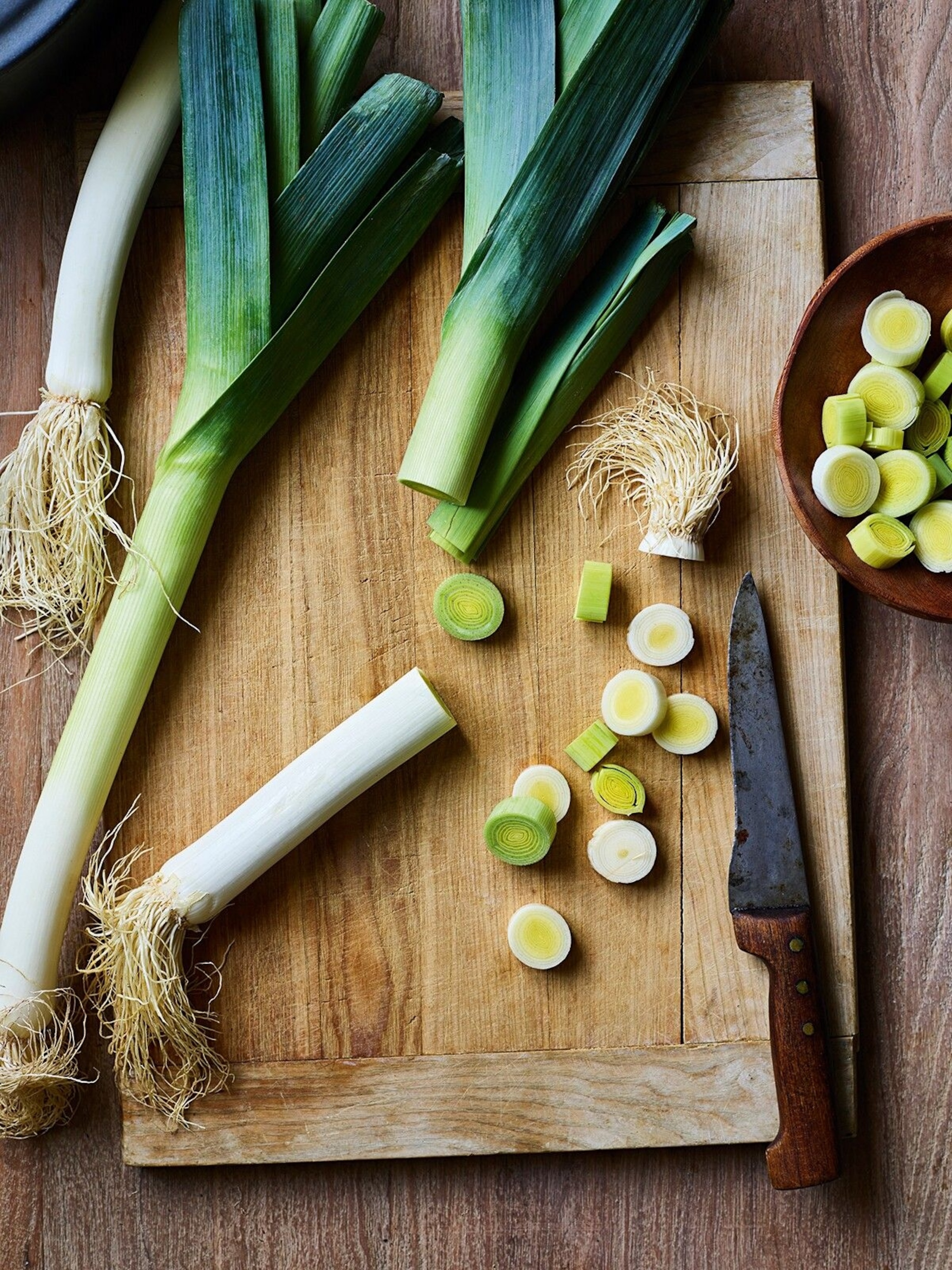
Cawl predates written records, and archaeological evidence suggests prehistoric Welsh cooks were cooking using pots of water warmed with fire-heated stones. The landscape in Wales is speckled with evidence of this in the shape of ‘burnt mounds’ (shattered, scorched rock fragments and charcoal), some dating back to around 2500 BC. This practice of pot-boiling with hot stones lasted well into the Roman era in some areas, and although many Iron Age cooks would have used cauldrons suspended over fires, it was the Romans who brought mass-produced iron cooking pots to Britain. These three-legged cauldrons were widely used for cawl-making well into the 20th century.
According to the Laws of Hywel Dda (a legal framework drawn up by the eponymous Welsh king in the ninth century), cabbages and leeks were the main cultivated vegetables at the time. And although Wales today is strongly associated with sheep, they only became common as more of the country’s highland areas were deforested. What’s written in these ancient manuscripts suggest pigs were, at the time, more important. Welsh beef, meanwhile, was highly prized — as far back as the 14th century, it was being exported to England. Bobby Freeman writes that the Celts measured their wealth in cattle well into the Medieval period. So, along with salted pork, cabbages and leeks, it’s likely Hywel Dda’s own cawl would have featured stewing beef.
Potatoes are now considered a crucial ingredient in cawl, but they didn’t arrive in Europe until the 16th century and weren’t widely adopted in Wales until the 18th century, when they started to overtake meat and vegetables (including leek, cabbage and root vegetables) as cawl’s primary ingredient. This wasn’t by choice, but a necessity, brought on by cereal crop failures and poverty due to Enclosure, which took away traditional rights on common land. This combination of factors drove late 18th century Welsh agriculturists away from self-sufficiency (earlier rural households would have grown a variety of crops and kept animals for meat, butter and cheese) and into potato-dependent poverty. Before potatoes, cawl was thickened with oats — a tradition some cooks continue by adding a finely milled oatmeal to the broth. Some cooks also serve it with oat-based or flour dumplings (sometimes called doughboys, or trollies). Besides potatoes, other cawl ingredients that were relative latecomers include turnip and swede, which weren’t planted in Britain much before the 18th century; carrots, meanwhile, arrived some time between the 11th and 15th centuries, and the earliest varieties grown here would have been yellow or purple.

By the late 1900s, cawl had become the dish we know today: made with a piece of lamb or mutton, beef, bacon or even salt beef, often on the bone, slowly cooked in water — perhaps the day before eating — augmented with potatoes and whatever root vegetables are seasonal and available. Some cooks use onions, some wild garlic, and many add leeks.
For Welsh food writer and TV cook Beca Lyne-Pirkis, making cawl reminds her of her grandmother, who lived on a farm in Carmarthenshire and fed her six children and various farm labourers on cawl at least once a week. “For Sunday lunch, they’d butcher a lamb or a pig, and cawl would be made from the leftover meat,” she says. “There was always a pot on the go — the depth of flavour you get from cooking it for so long is out of this world.”
Beca still owns the 100-year-old wooden spoons her grandfather hand-carved as love tokens for her grandmother and insists — as many of her compatriots surely must — that using such time-honoured implements is the best way to eat the broth.
Welsh chef James Sommerin was also fed cawl by his grandmother. He recalls the dish being reserved for special occasions and that she was fond of adding parsley and thyme, as well as a more unusual garnish. “She used to drop in a handful of cockles at the end,” he says. “I’ve never seen it anywhere else, but they gave some acidity. It was a bit much for me, if I’m honest.” At his previous restaurant, James Sommerin, in Penarth, the chef created a deconstructed cawl with sous vide lamb and leeks, topped with burnt leek powder and leek chiffonade. At his new restaurant, Home, in the same town, he’s created a more traditional version for his tasting menu.
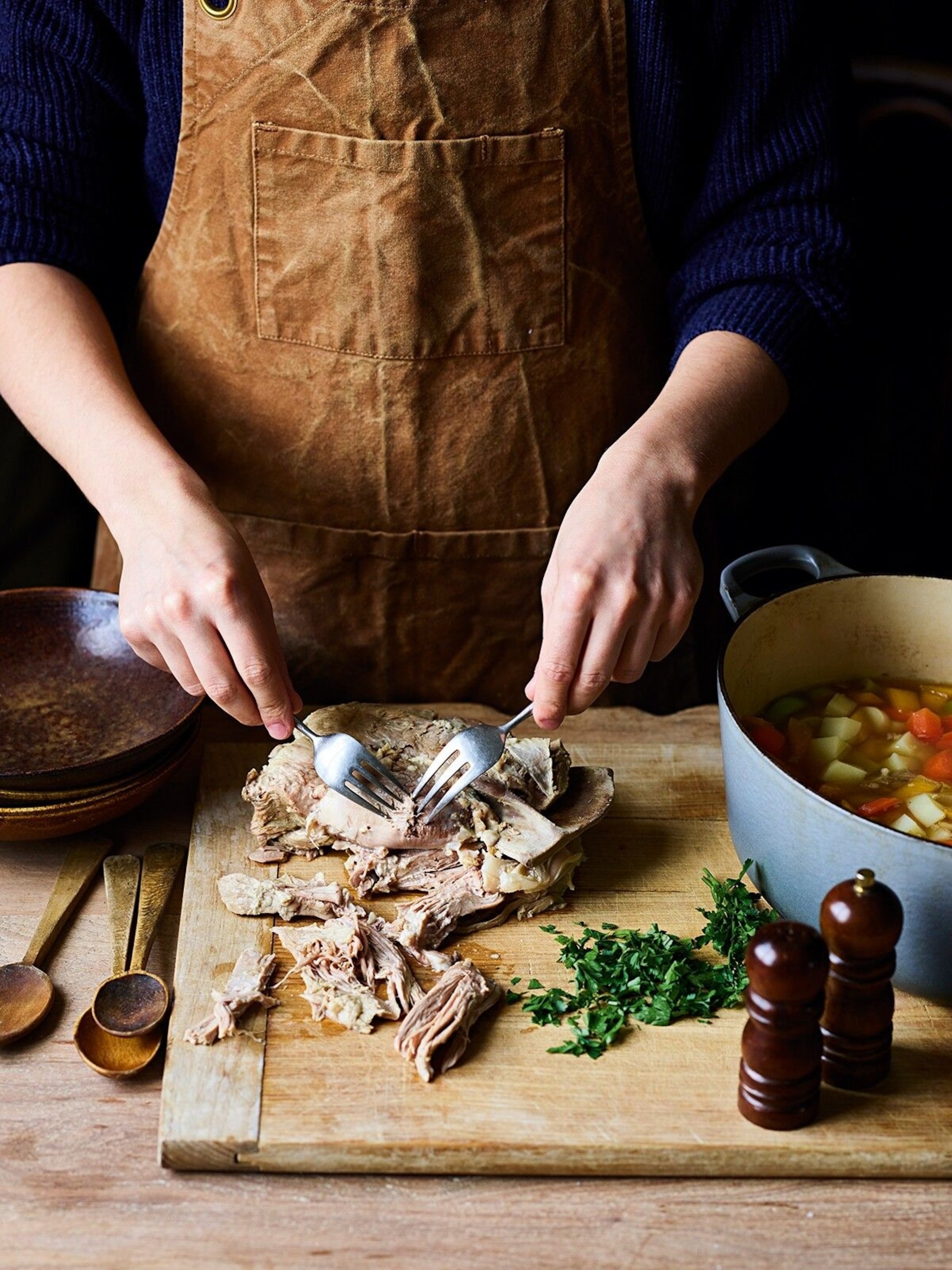
Gilli Davies-Cliff, champion of Welsh food and author of the Flavours of Wales cookbook series, was given an old recipe while researching cawl. “This one sprinkled marigold petals on top,” she says. Marigold petals were commonly used as food colouring, but in cawl they were commonly used to lend a slightly citrussy, spicy flavour. Other flavourings might include parsley and thyme, as per Sommerin’s grandmother, or black pepper, as suggested by acclaimed chef Hywel Griffith, whose grandmother also added pearl barley. “Every family does it differently,” he says. There is concord on one thing, however. “The magic of cawl is it’s the original one-pot wonder,” Griffiths says. Beca Lyne-Pirkis agrees: “It’s a complete meal, and pure comfort.”
Welsh cawl: a timeline
2500 BC: The earliest known ‘burnt mound’ is created in Wales. Used to prepare cawl, this cooking technique uses fire-heated stones.
1600s: The potato arrives in Britain and Wales 1667 The oldest known Welsh love spoon is carved (now part of a collection at St Fagans National Museum of History); both plain and decorated hand-carved wooden spoons and bowls were used to eat cawl.
1500s-1800s: Welsh sheep are now widely farmed and traded for meat rather than just their fleeces. Queen Elizabeth I was fond of Welsh mutton; Queen Victoria enjoyed Welsh lamb.
1928: Mati Thomas writes what may be the first named cawl recipe, as part of a prize-winning essay entitled ‘A Collection of Welsh Recipes’. Made with salt bacon or beef, it’s thickened with oatmeal and flavoured with the herb savory.
2016: Cawl makes its first (of several) appearances on the TV cooking show, Great British Menu.
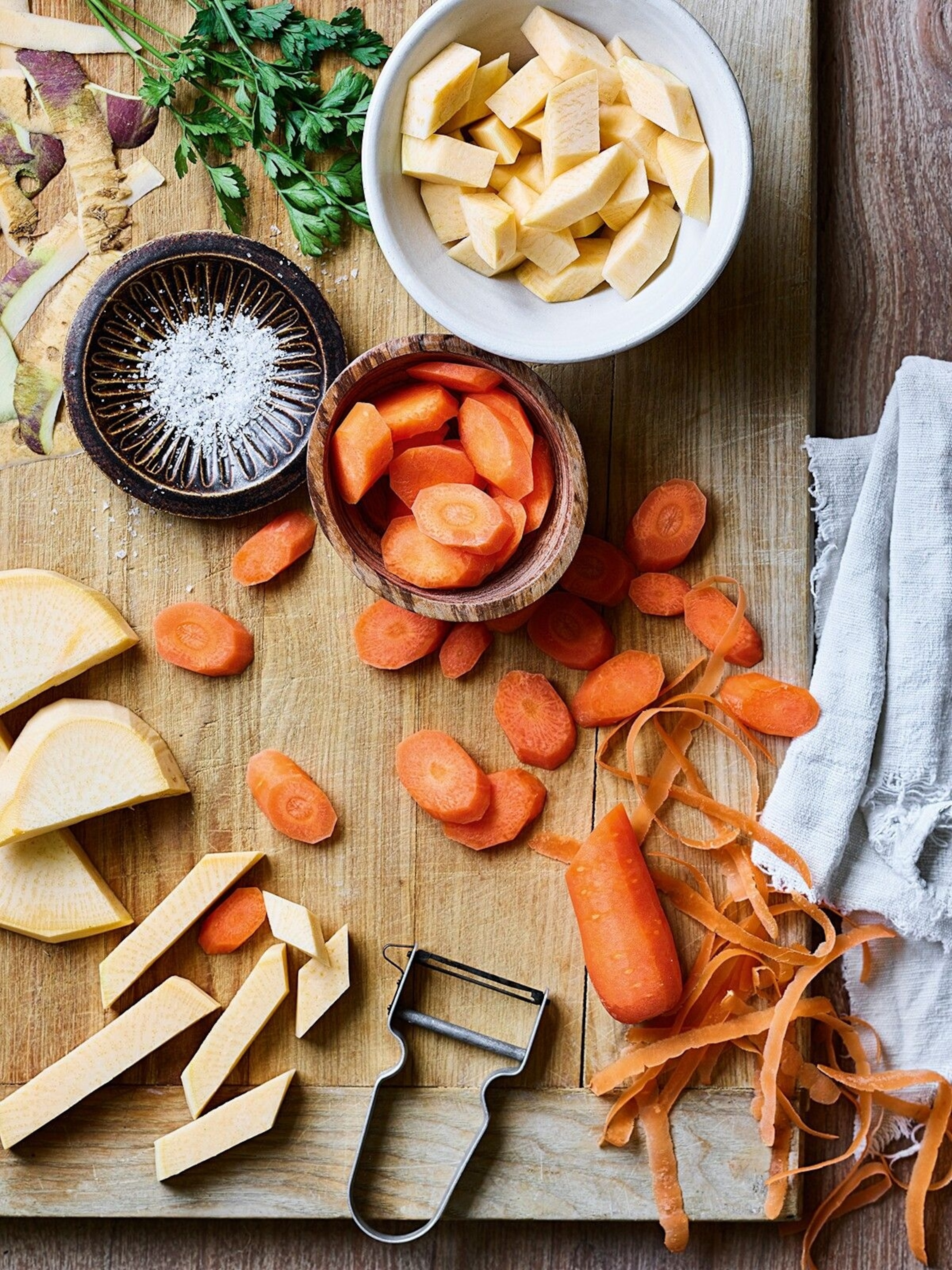
Recipe: Beca Lyne-Pirkis's cawl
Welsh food writer and TV cook Beca Lyne-Pirkis competed in The Great British Bake Off in 2013. A year later, she was given her own Welsh-language cookery show, Becws, on S4C. “Cawl was one of those meals that was made weekly by my mamgu [grandmother],” she says. “The broth that bubbled away in the pot would take on a sweet earthiness from the vegetables and an iron-rich depth of flavour from the meat and bone. It’s a complete meal in a bowl. However, some chunks of cheese and bread would be placed on the table to make sure everyone left with a full belly.”
Serves: 6-8
Takes: 3hrs 30mins
Ingredients
1kg lamb shoulder, bone in
5 large potatoes, peeled and chopped into bitesize pieces
3 carrots, peeled and chopped into bitesize pieces
1 swede, peeled and chopped into bitesize pieces
1 large leek, sliced
small bunch of fresh parsley, chopped
bread and cheese, to serve
Method
1. Put the lamb in a large saucepan and cover with water. Bring to a boil, then reduce to a simmer, scooping o any scum that rises to the surface. Cook for 2-3 hrs until tender and falling off the bone.
2. Once the meat is cooked, add the potatoes, carrots and swede to the pot and season with salt and pepper. Simmer for 20 mins, then add the leek and cook for 10 mins more. Taste to check the seasoning, then add the parsley.
3. Just before serving, remove the meat and bones from the pan. Shred or chop the meat into bitesize pieces before returning it to the pot. Serve the cawl in bowls with bread and cheese on the side.
Taken from Feeding My Army (£15, Gomer Press/Y Lolfa)
Published in the Wales guide 2021, distributed with National Geographic Traveller (UK)
Follow us on social media

